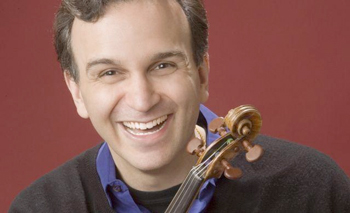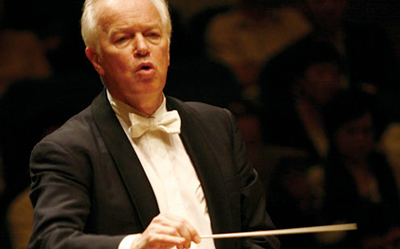by Timothy Robson

Max Bruch was only 19 when he began his first violin concerto in 1857, but it wasn’t completed until ten years later. Despite living for many years after the concerto’s initial success, Bruch is remembered for only a handful of works besides this concerto, including the Scottish Fantasy for violin and orchestra and Kol Nidrei for cello and orchestra. The evening’s program booklet pointed out Bruch’s epic business failure with the violin concerto: he was paid a one-time lump sum for the concerto, thus depriving himself of the long-term wealth this concerto probably would have brought him.
Since his debut with the Cleveland Orchestra in 1988, Gil Shaham has been a regular visitor, and he gives consistently virtuosic and musically sensitive performances. He always exudes pleasure in performing. He smiles at the orchestra and conductor, he is involved with the music, and is at ease communicating musical ideas with them. Such was the case in this performance of Bruch’s famous concerto.
The first movement’s opening cadenzas showed Shaham’s artistry and fluent technique. The second movement Adagio was full of long phrases of sentimental melody, the epitome of 19th century violin playing. An especially memorable moment was a long harmonic suspension that slowly resolved to triadic perfection. After only the briefest pause Edo de Waart launched into the third (and most famous) movement, a Finale/Allegro. It is a showpiece for the soloist, full of double stops and other feats of virtuosity.
The writing is much more overtly brilliant than the first two movements. Although the finale has the basic outline of sonata form, Bruch didn’t waste much time on development. He was eager to get back to the big tunes and an accelerando to the triumphant end. Shaham and De Waart made the most of it, prompting an unusually long and vocal ovation for the performers.
After several curtain calls, Gil Shaham returned to the stage for a solo encore, Johann Sebastian Bach’s “Gavotte en Rondeau” from the Partita No. 3 in E major, BWV 1006. It was charming, with humor as well as sensitive musicianship.
It appeared that more than a few in the audience departed at intermission, which was a shame, because they missed a splendid performance of Mahler’s Symphony No. 1, a paean to nature, and to human life itself. With the exception of the horn section, who seemed to be having a rough evening and a larger than usual number of missed notes in Mahler’s notoriously exposed orchestration, the orchestra was in fine fettle, attentive to Edo de Waart’s lyrical interpretation.
The mysterious opening section, with its unison octave sustained notes in the strings, and woodwind fanfares echoed by off-stage trumpets, was magical. The musical interval of the perfect 4th, in many guises, forms the basis of the thematic material. Lengthy development ended in a fortissimo technicolor sprint to the end of the movement. The second movement Ländler had the required rustic appeal, while the third movement funeral march, based in part on the children’s song “Frère Jacques” in a minor key in low strings and winds, was phantasmagorical with its grotesque collage of klezmer-style music and arrangement of one of Mahler’s Songs of a Wayfarer settings.
If any criticism could be made, it might be that the tone of the third movement was not grotesque and satirical enough. This performance seemed a little too refined. Without pause, a crash of a suspended cymbal woke up the audience to the beginning of the last movement, in which themes from the first movement return. The development and structure of the movement are much more complex than the preceding three, but the whole orchestra shone triumphant in the final moments of glorious D major, showing off the amazing trumpet section of The Cleveland Orchestra.
Published on ClevelandClassical.com September 1, 2015.
Click here for a printable copy of this article



